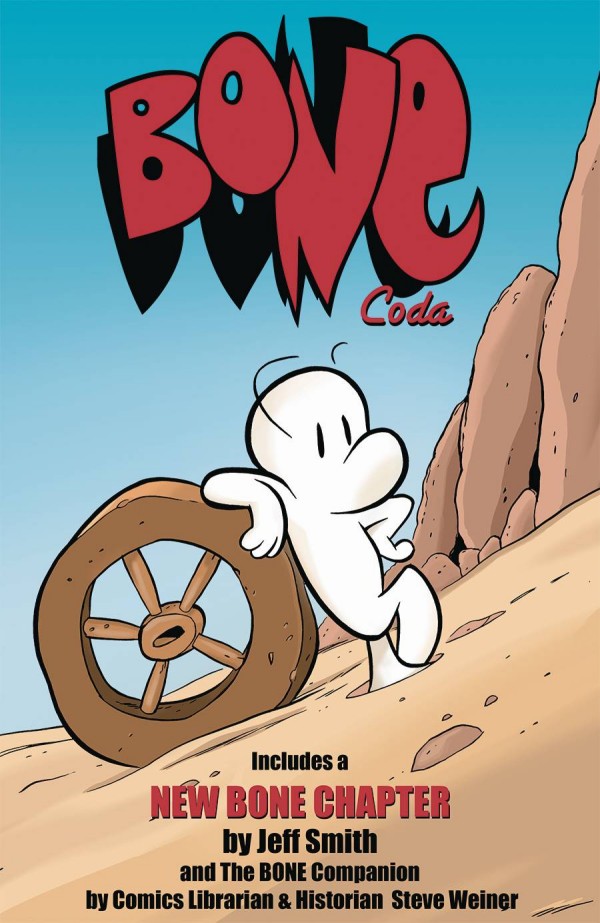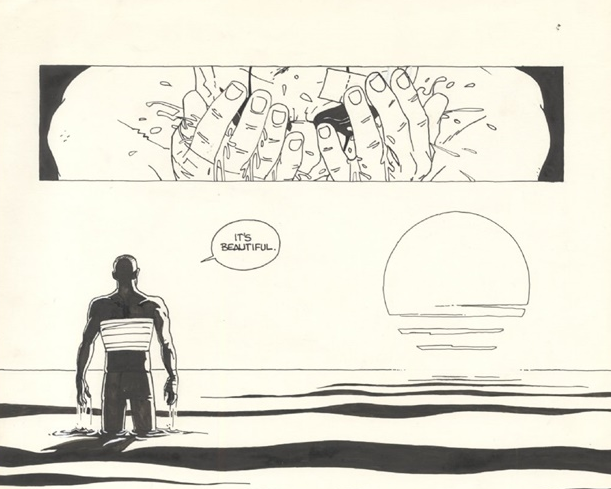Written by Saladin Ahmed
Line Art by Sami Kivela
Color Art by Jason Wordie
Letters by Jim Campbell
Published by Boom! Studios
One of the great strengths of horror as a genre is its ability to work side-by-side with social commentary, both for good and bad purposes. Dracula is about fear of the foreign other. Lovecraft's stories feature great conceptual ideas, but aren't exactly hiding his racism. Godzilla is the living embodiment of the horror of nuclear war. In this case, Saladin provides a cool story about light versus darkness, but it's clear there's more than that at work. Setting the story in 1972, Ahmed uses his protagonist, a take-no-shit reporter, to comment on problems from both her time period and ours. From the opening page, where Abbott hits the scene in a great half-splash that sets the story in all its time period glory, Saladin is ready to take on social issues that haven't been resolved, over forty years later.
Look at that entrance! We learn so much from the visuals here by Kivela, combined with Ahmed's set up dialogue, including the fact that the cops/reporters already gathered want to blame everything on the Black Panthers. So right away, we get some racist hints that become further out in the open as Saladin moves on with the story. And if the story were just about Abbott fighting racism and the occult, this would be a good story. But there's also other elements, including being a woman in a perceived man's world (reporting), her desire not to be tied down to a man on anything but equal terms, Abbott's concern about showing open bi-sexuality, and the pressures on both white and black people in this world, where even the good people like her newspaper boss are caught between doing the right thing and survival.
Any and all of these topics could be placed in a modern setting. Saladin's ability to make that point without sacrificing any of the horror plot--at no time does the pace slow to provide a character with a speech-to-the-reader moment--really impressed me. Instead, what we get is a sense of not only how hard things are for Abbott and her friends, but the desperation when you are not only fighting the supernatural, but also the human world around you. When Abbott confronts a potential villain in the book, she's unable to convince anyone because she's black and her antagonist is white. It adds to the drama and is extremely realistic.
While the occult elements themselves are not exactly unique (light versus darkness, a reluctant champion, a vague magical guide who's into drugs and speaks in riddles), and the characters are very much archetypes--an outsider hero, her cop friend, an ex-lover with criminal ties, the hardass but good-hearted boss, etc.), Ahmed uses the tropes of both detective and horror stories extremely well. The originality here comes in the portrayal, not the parts themselves. Abbott is extremely engaging as a main character. She has quirks (2 brandies a night, one at a bar, and one at home), determination, and the ability to credibly survive a story like this one. The mystic is really funny--when asked if he must smoke a joint, he delays the question and answers with "I absolutely, positively, no-questions-asked must smoke this." The villain's over-the-top, chew a bit of the page moments are also well done, but I don't want to give away the secret here of who he or she is. It's a clinic on how to write a story using as many tools in the genre toolbox as possible, without making them feel cliche.
Due to my connections in sci-fi circles, I already knew who Saladin Ahmed was, and after hearing good things about Black Bolt, I was extremely excited to read the announcement of this series, which looked to be right in my wheelhouse. It didn't disappoint, either on initial reading or in my re-read of the collection for this review. While Ahmed isn't afraid to add a lot of words to his comics, unlike others who've tried to make the transition from prose to comics, he has an amazing ability to pace for the comic page that usually takes years to get right. Each issue in this series ends with a great cliffhanger and feels like a complete chapter of the story. There's a definite sense of collaboration with his line artist, Sami Kivela, which leads to complex panels that play with the medium far better than a lot of other books on the shelves right now. At no time does this feel like a story that could be told in another medium.
In short, it's a comic book series. Sometimes I really dig a story, but you can tell the creative folks behind it have one eye on the adaptation. (And given that's where the money is, I don't blame them.) It's always great for me when I can look at something and tell it's designed to play to comics' strengths as a medium, and Abbott does exactly that, such as this sequence from the beginning of issue two:
Just look at the panel structure here for a moment. First of all, there's the way that Kivela centers everything so that on these pages, you're always looking at the action, whether it's a demonic figure trying to kill Abbott or her use of the camera to fight back--a lovely metaphor about the power of the press! But looking closer--there's the fact that Ahmed and Kivela play with a downward arrow panel shape for the attack, pushing Abbott (and the reader) down. When it's time for a recovery, the same panel shapes are used--but now the arrow is pointing up, giving us hope that ends in the half-splash that hints at the battle of light and darkness to come. Add in the details--look at Abbott's eyes as she scrambles to avoid the attack, for example, or the inking on the cloak--and these pages really pop. It's colored perfectly by Wordie, who allows the details to remain in focus while still providing bold colors that make for a sinister atmosphere.
Here's another example of Ahmed and Kivela playing with panels. A talking scene is given visual interest by the framing of the panels across a larger image, complete with some great Sal Buscema-style eyebrows!
Other nifty things here are the long-look final panel that establishes the time period by the architecture and the cars and the way in which Abbott strongly dislikes having the gun in the middle panel. At other times, Kivela places the reader's eye below the characters, and in true Marvel-style, makes sure that we're moving at all times. It's rare for anyone in Abbott's world to just stand and talk. When Abbott is in a bar with an ex-lover, we see small touches like feet reaching for each other under the table. In another talking moment, Abbott and another ex are arguing near a police file, so the panels are created to look like snapshots in the file.
Oh, and the horrendous human-animal creations! Just wait till you see them--each based on mythology and one could argue they get creepier as the story progresses. Kivela's art on this book is phenomenal, and I can't wait to see what they work on next.
Abbott is a great addition to Boom!'s line of horror books, going back to the days of their Cthulhu anthologies and carrying on right up to the Woods another books. Meanwhile, between this book and Exiles, Saladin Ahmed has firmly established himself as one of the best writers in comics right now. I look forward to his next creator-owned project and in the meantime, make sure you pick this one up right away. It's a horror comics lover's dream.












